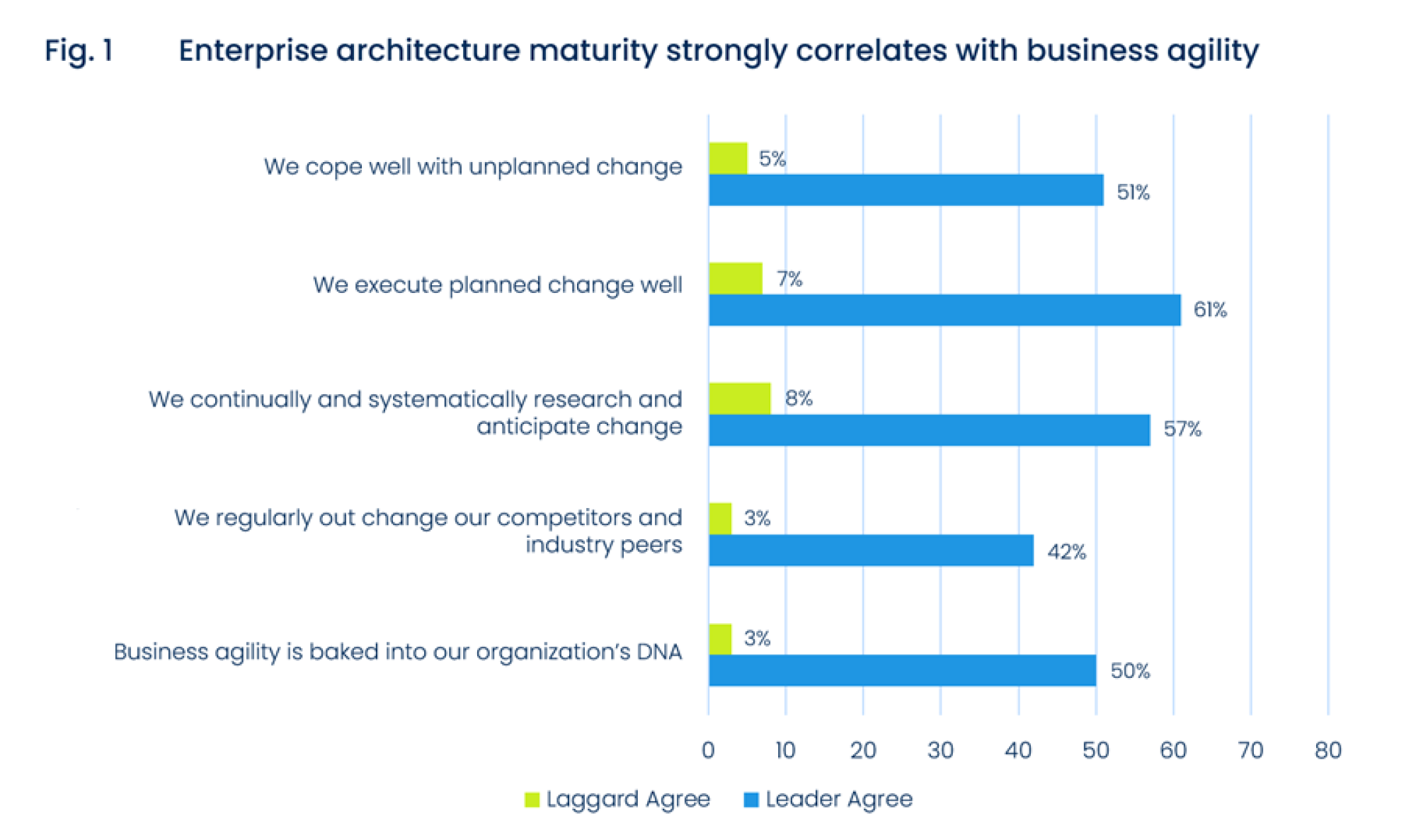In today’s rapidly evolving digital landscape, Enterprise Architecture stands as the cornerstone of organizational success. By providing a comprehensive framework that aligns business strategy with IT infrastructure, Enterprise Architecture enables companies to structure and optimize their processes, data, and technology to navigate complexities, drive innovation, and achieve sustainable growth. It offers a holistic view of all elements within an organization, facilitating more effective decision-making and maximizing the value of investments.
However, for many organizations, implementing effective Enterprise Architecture practices presents increasing challenges due to a range of obstacles: a shortage of expertise, difficulties in attracting talent, the scale of projects, different levels of IT maturity, and misalignment between tactical and strategic vision. These challenges highlight the critical need for understanding the principles and practices of Enterprise Architecture for building an efficient, agile, and future-ready organization.
Enterprise architecture can be the accelerator required to help an organization reach its objectives through its various components
- IT governance architecture: Ensures that IT investments align with business goals and comply with regulations.
- Business architecture: Defines the organization’s strategy, governance and business processes, providing a clear view of how the business operates.
- Data architecture: Focuses on data management, integration, and analytics, enabling better decision-making through insights derived from data.
- Application architecture: Addresses the design and integration of applications to ensure they work together effectively to support business processes.
- Infrastructure architecture: Encompasses the underlying infrastructure, including cloud solutions, to ensure scalability and reliability.
- Security architecture: Provides a framework for protecting organizational data and systems against threats and vulnerabilities
- Solution architecture: Outlines how specific solutions will be designed and integrated to meet business needs
How enterprise architecture enables business growth
Commonly mistaken as an element that only impacts IT, Enterprise Architecture offers the framework to support the following:
- Strategic alignment: Design the future of the organization holistically, by aligning business, data, systems and technology
- Decision enablement: The central repository of the application portfolio, data, and business processes an organization is readily available to conduct impact analysis when decisions are required about the impact’s changes to platforms, or data may have
- Identify cost optimizations: Explore redundant systems and operation support required. Know quickly what data is being leveraged across capabilities and platforms
Strategic alignment: bridging business goals and IT infrastructure for long term success
Enterprise Architecture serves as a strategic blueprint that interconnects various facets of an organization, ensuring cohesive and efficient operations. It aligns IT initiatives with business goals, ensuring that technology investments support strategic objectives. This alignment helps optimize processes, improve customer experiences, and drive business growth. By establishing data governance frameworks, it ensures data consistency, quality, and accessibility across the organization. Through defined data standards and models, it enables effective data management and analytics, crucial for informed decision-making. Enterprise Architecture provides a holistic view of the organization’s IT landscape, mapping out interdependencies between systems and applications, which aids in identifying redundancies, streamlining integrations, and enhancing interoperability. It also guides the selection and implementation of scalable, secure technology solutions aligned with the organization’s long-term vision. By setting technology standards and roadmaps, it ensures that IT infrastructure can adapt to evolving business needs and technological advancements.
Decision enablement: leveraging frameworks and processes for agility
In a world where technology is rapidly evolving, it has become easy to assume adding a new system will solve the problem. However, it is important to first understand what you have, before establishing where you want to go. As organizations’ Enterprise Architecture maturity is advancing, they develop more robust frameworks and processes that enhance their ability to respond swiftly to market changes and emerging opportunities. Mature Enterprise Architecture practices ensure that IT and business strategies are seamlessly aligned, fostering an environment where innovation thrives, and operational efficiencies are maximized. This alignment not only reduces complexity and redundancy but also empowers organizations to pivot quickly, adapt to disruptions, and maintain a competitive edge in a dynamic business landscape.
According to a study conducted by Bizzdesign, leader in Enterprise Architecture solutions, among 500 companies with different levels of Enterprise Architecture maturity, it appears that there is a correlation between the level of Enterprise Architecture maturity and business agility. To illustrate, as figure 1 shows, Enterprise Architecture leaders rate themselves on Business Agility metrics much more highly than laggards. Indeed, this means that having robust processes and tools for managing enterprise architecture facilitates understanding the impact of change on IT, allowing companies to anticipate change easily and respond more adequately to unexpected events and change.

State of Architecture 2024 - Bizzdesign
Cost optimization: eliminating app redundancies for enhanced efficiency
A robust application portfolio is the foundation to understanding the current landscape.
Enterprise Architecture helps identify applications that are redundant, outdated, or underused within the portfolio. By consolidating or retiring these applications, organizations can lower maintenance costs and simplify their IT landscape. It also provides insights into application performance and utilization, allowing for optimized resource allocation to ensure applications run efficiently and economically. Furthermore, Enterprise Architecture establishes governance frameworks for managing each stage of the application lifecycle, from acquisition to retirement. This proactive management approach aids in planning timely upgrades, prevents costly last-minute repairs, and keeps applications aligned with organizational goals and budgets.
How we can help you
Enterprise Architecture experts prioritize understanding your users’ needs and the unique culture of your organization. Focusing on the future is crucial to ensure your organization and its architecture remain adaptable amidst rapid changes. We offer a tailored approach by customizing our best practices, accelerators, and tools to establish a robust foundation, helping you optimize the alignment of IT with your strategic goals and maximize the value of your IT investments. The objective is to empower your architecture to evolve and thrive in a dynamic digital landscape. Contact us to explore how we can support you on this journey.
